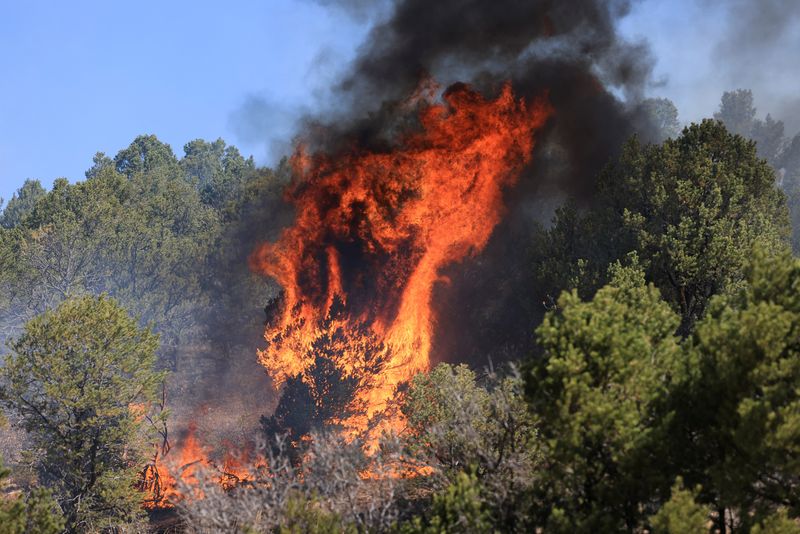By Andrew Hay
TAOS, N.M. – Miguel Gandert does not know whether his family’s 19th-century log home has been burned by a New Mexico wildfire, but he fears the blaze could destroy an Indo-Hispano mountain culture far older than the United States.
The wildfire is the largest now in the United States and threatens a string of villages high in the Sangre de Cristo Mountains where Gandert can trace roots to European and Mexican settlers as well as Native Americans.
The blaze has burned an untold number of homes in the Mora valley, and violent winds on Sunday threatened adobe mud-brick ranch houses, churches, chapels and water mills dating as far back as the early 19th century.
“It’s almost a form of cultural genocide that’s going on and the fire is the enemy,” said Gandert, a retired University of New Mexico professor who spent childhood summers fishing and helping on his family farm in the village of Mora.
Some residents’ families have been in New Mexico since the late 17th century, and more than half of Mora County, population 4,500, has stayed to defend homes, police said.
Working-class families in the communities of Holman and Cleveland used their own bulldozers and machinery to scrape fire breaks alongside firefighters, said Gabriel Melendez, who was born in Mora.
They are driven by “querencia,” or love of place, grounded in a religious sensibility for land they pray for at Catholic churches and chapels known as “moradas,” said Melendez.
“You’re losing inheritance, you’re losing the value of these homes,” said Melendez, a 69-year-old retired American studies professor whose nephew stayed in Holman. “People will rebuild, and they’ll work to retie the fabric of this torn culture, but it’s a big challenge.”
Those who have evacuated feel devastated, said Patricia Marie Perea, whose relatives left San Miguel County for Albuquerque.
“Three hundred years of ancestry is there in my family,” said Perea, adjunct professor in Chicana and Chicano studies at the University of New Mexico. “All of that makes it hard, if not impossible to leave.”
(Reporting by Andrew Hay in Taos, New Mexico; Editing by Leslie Adler)
